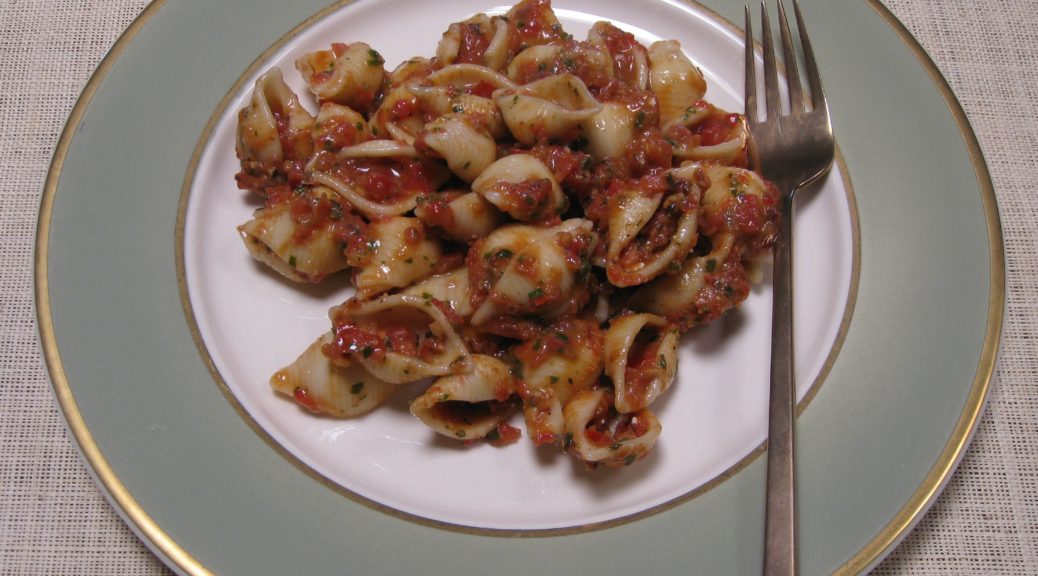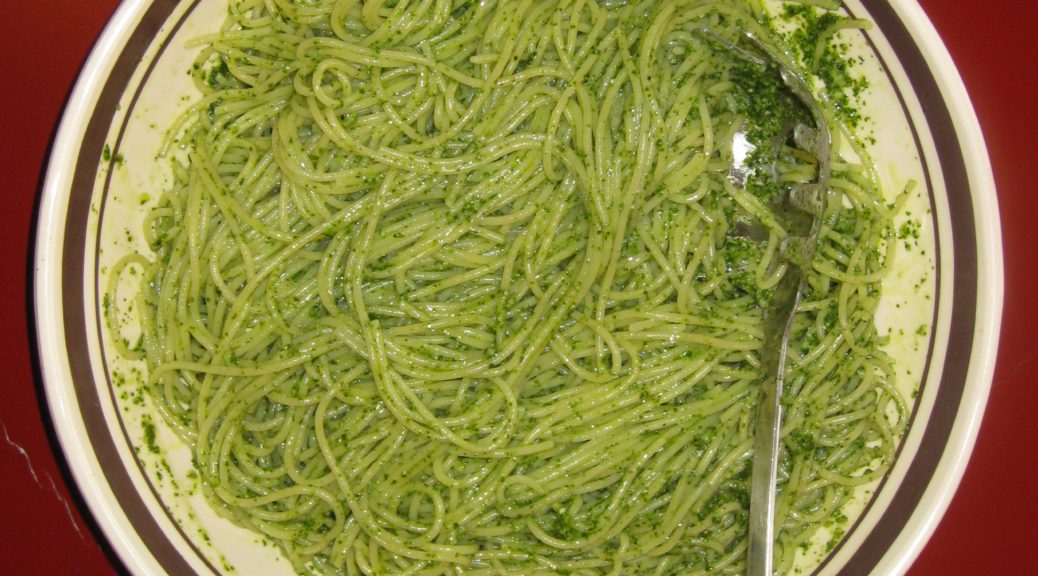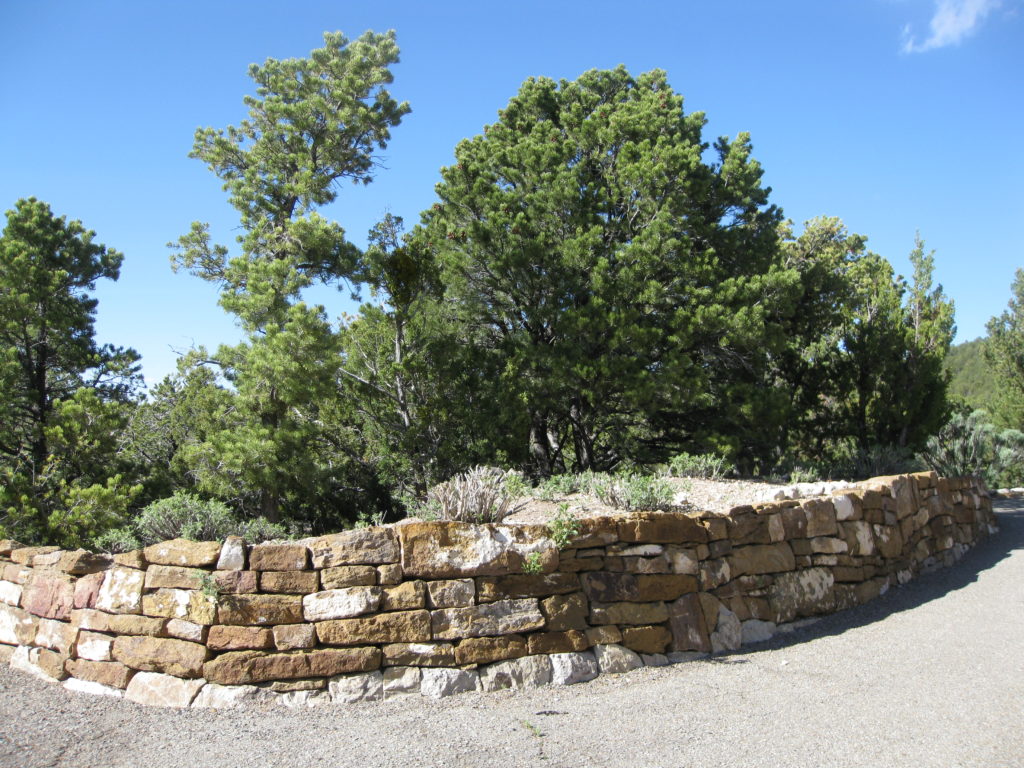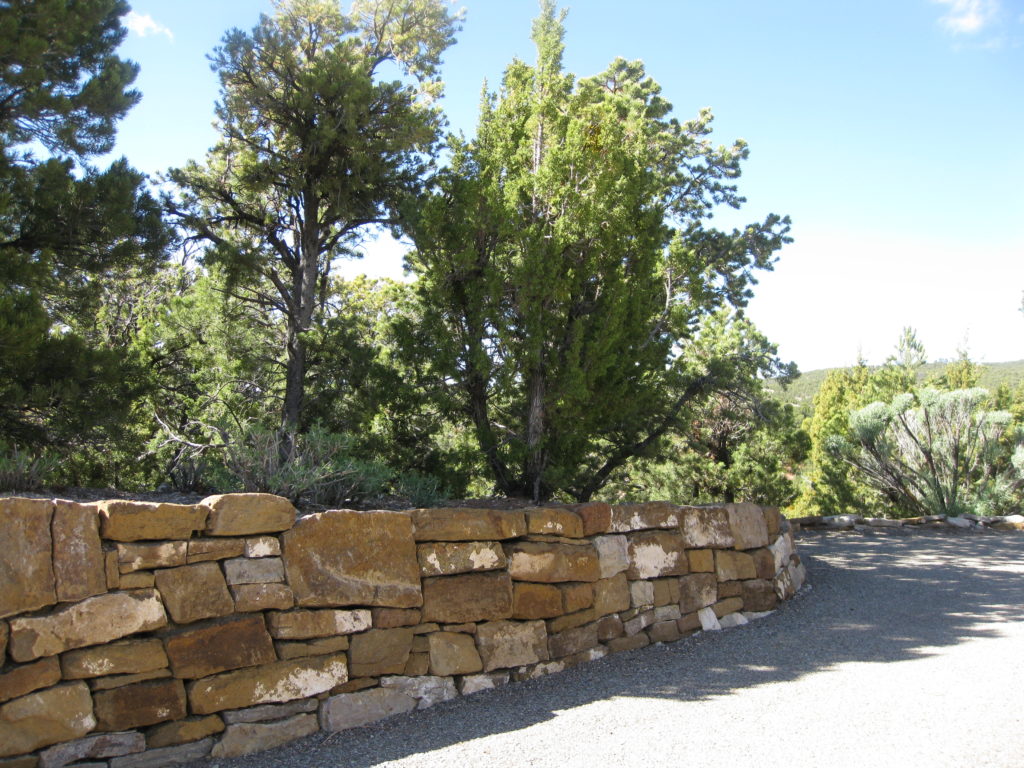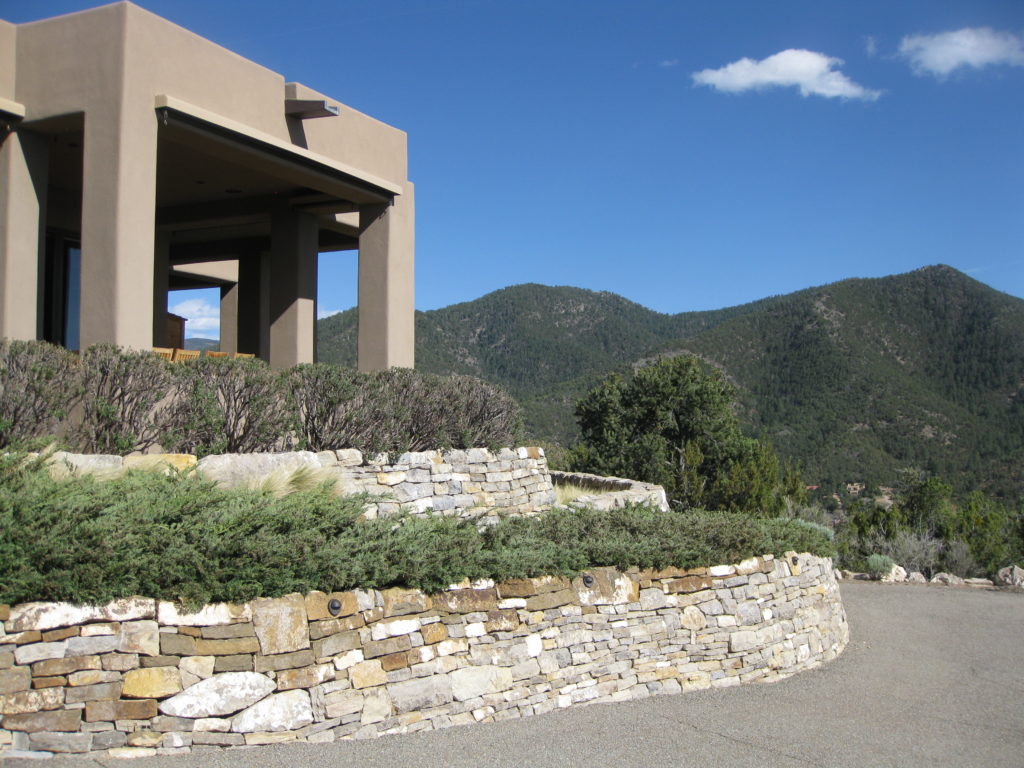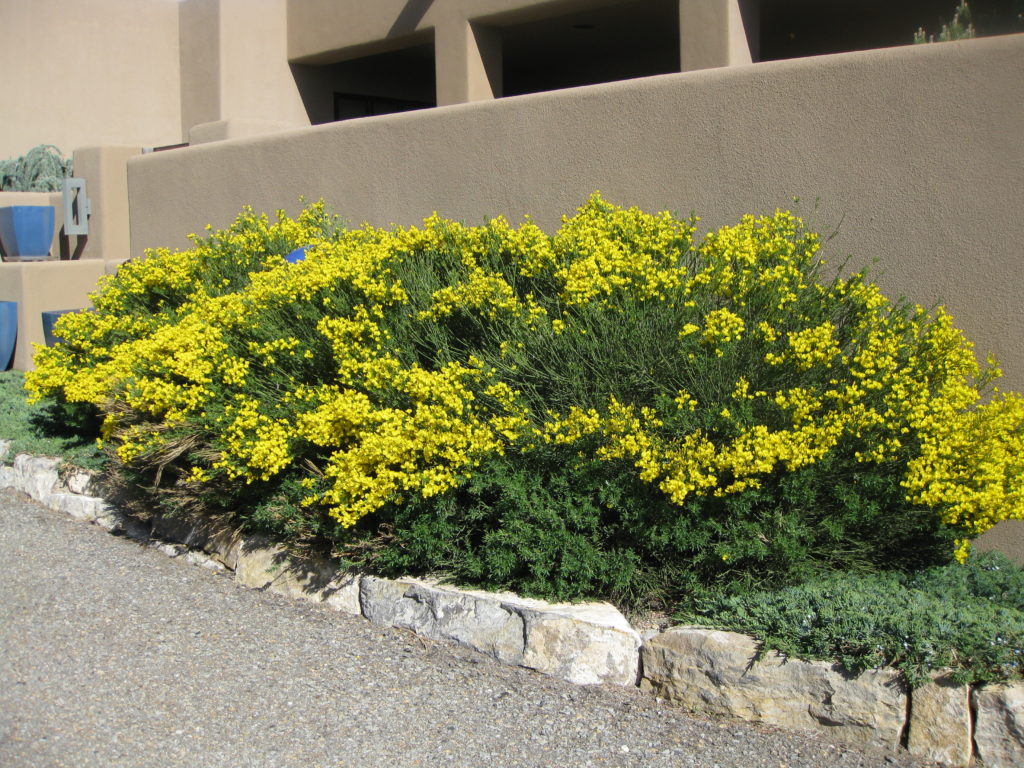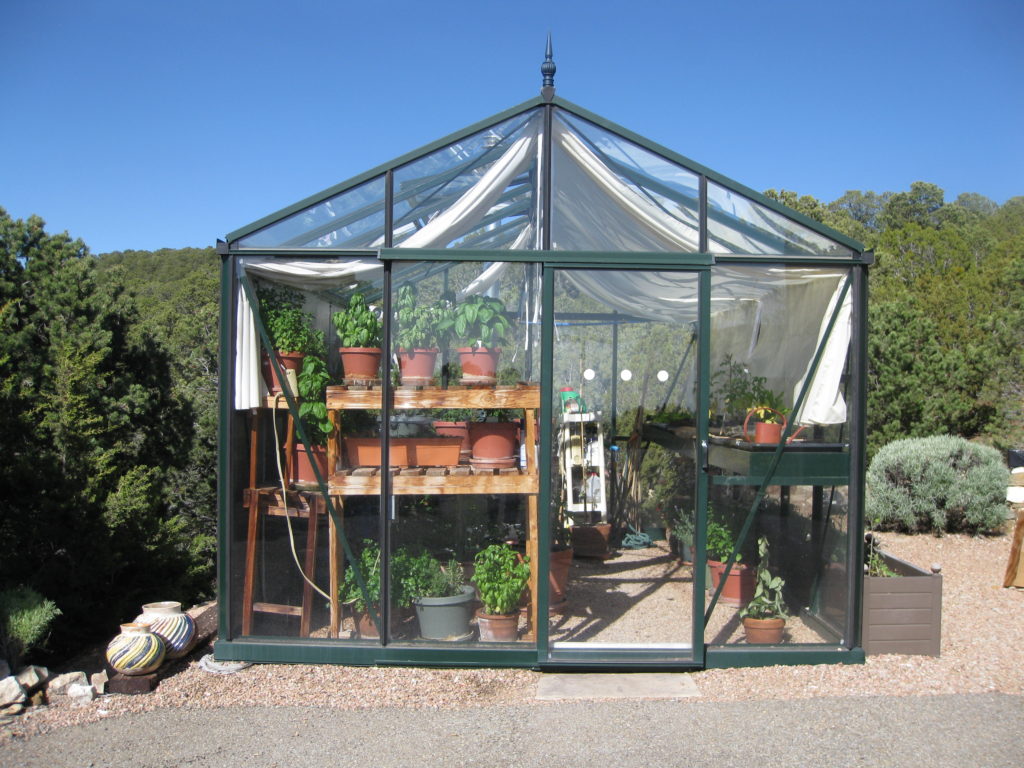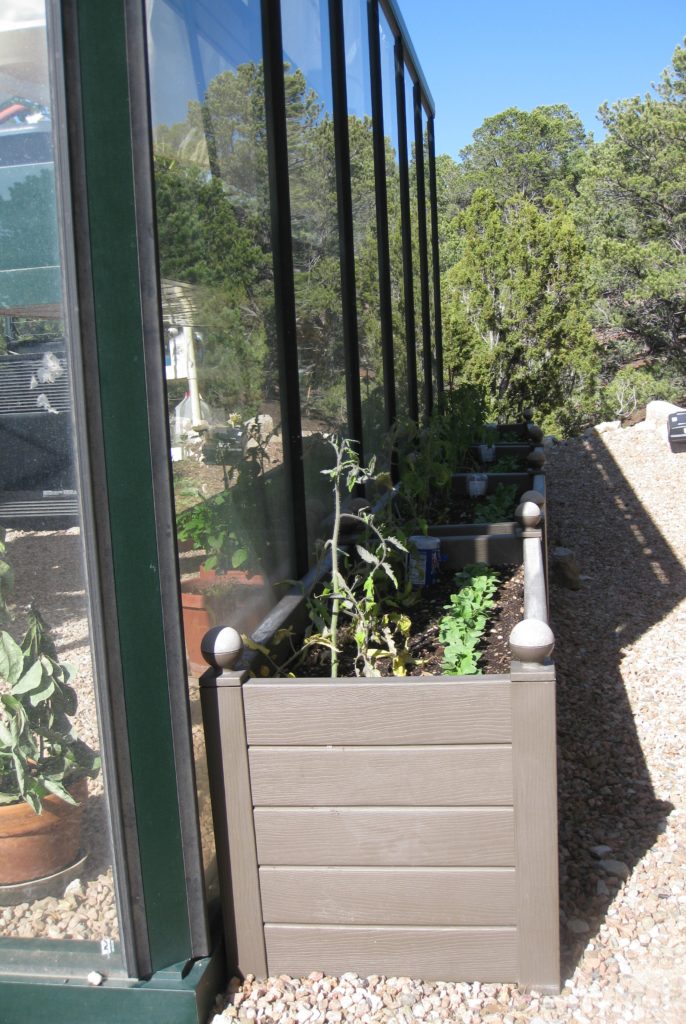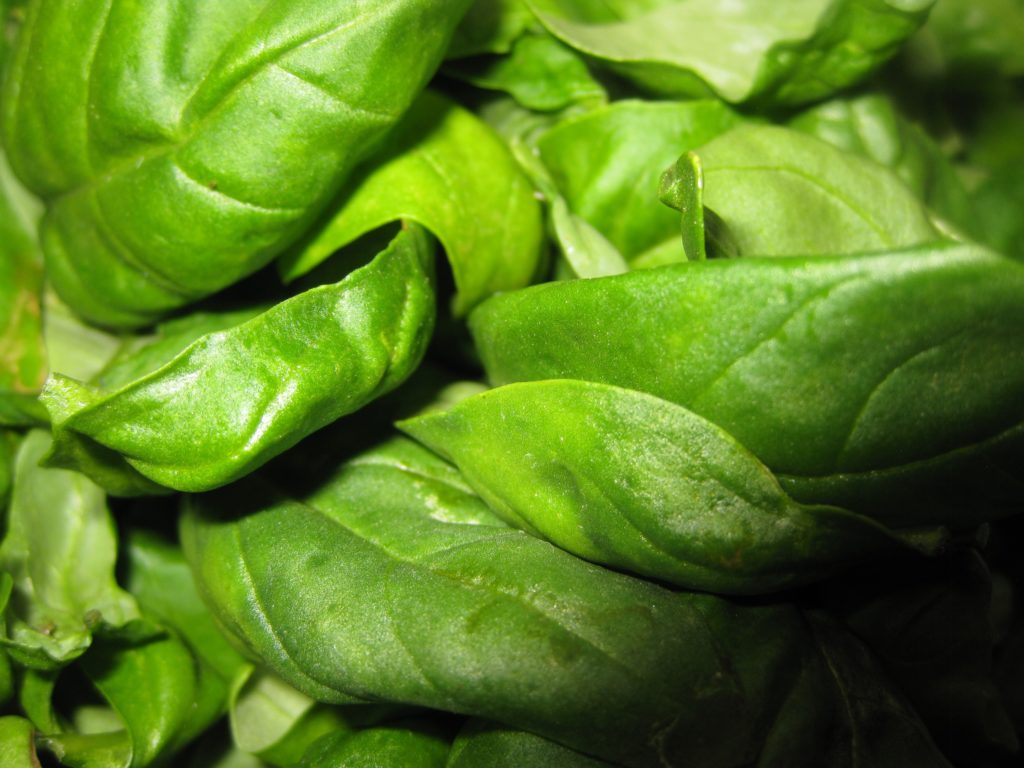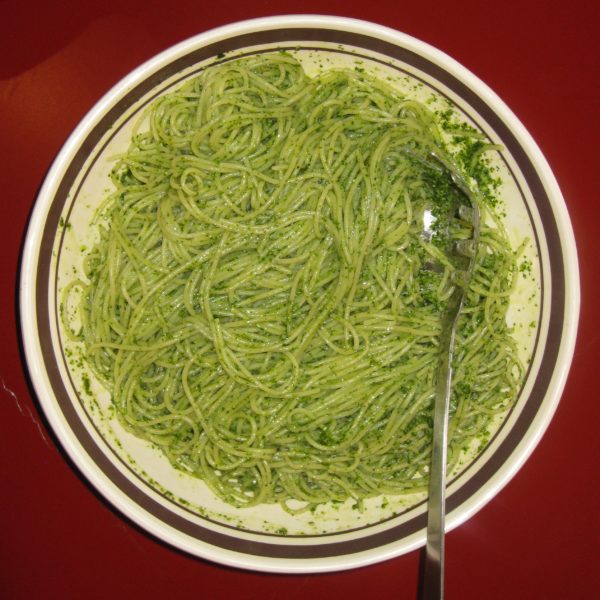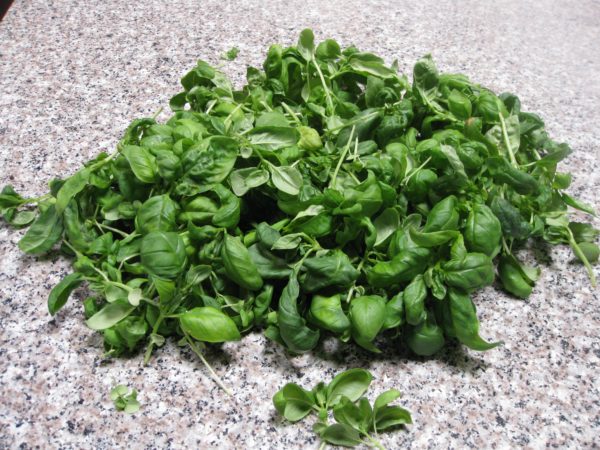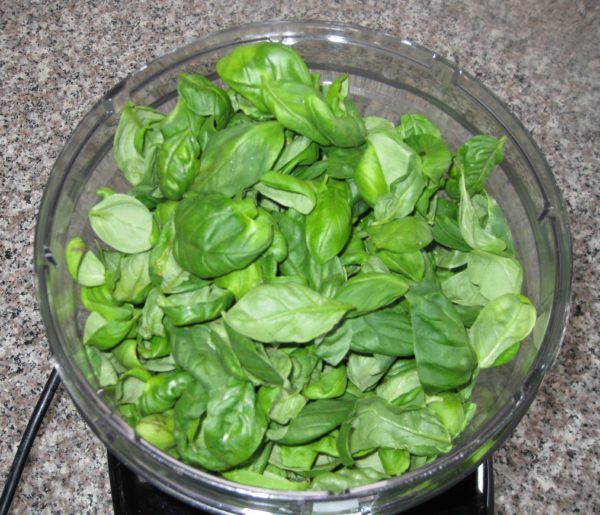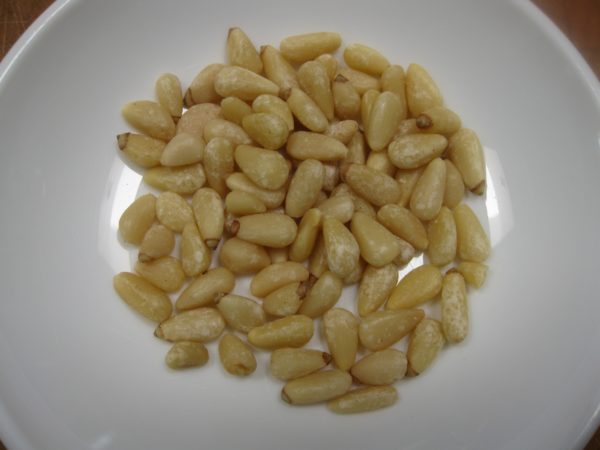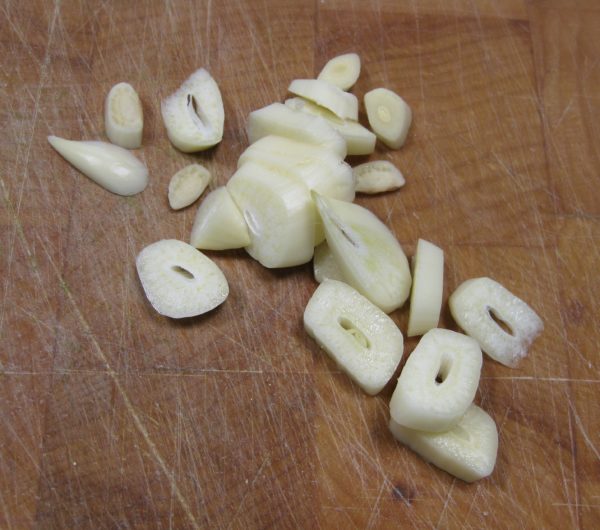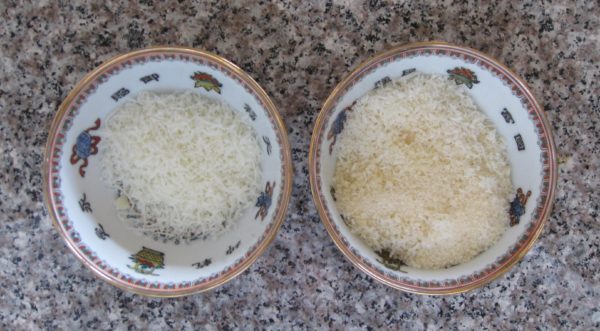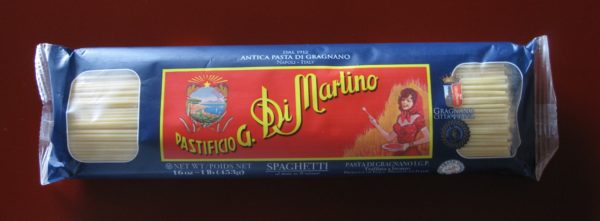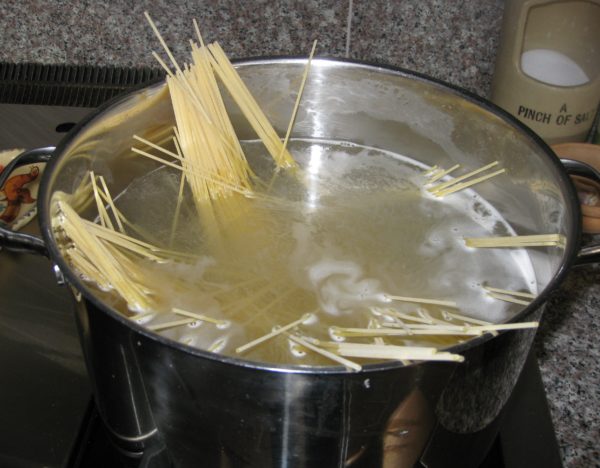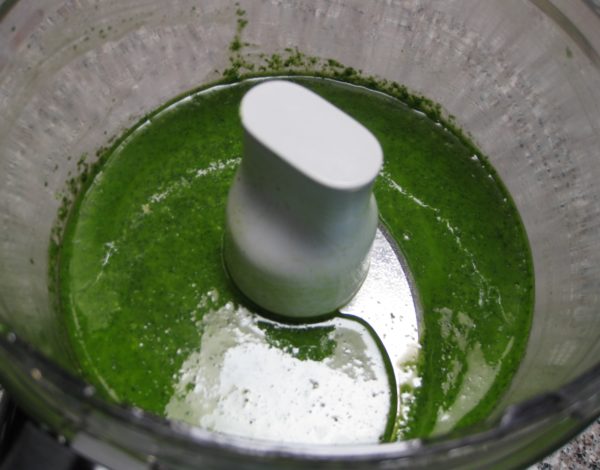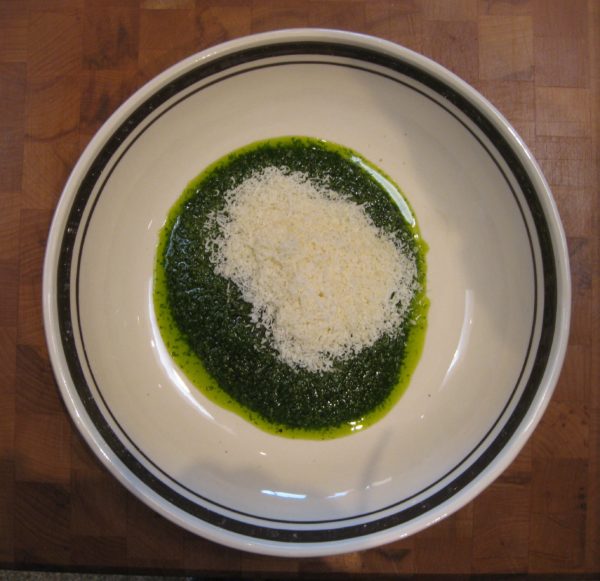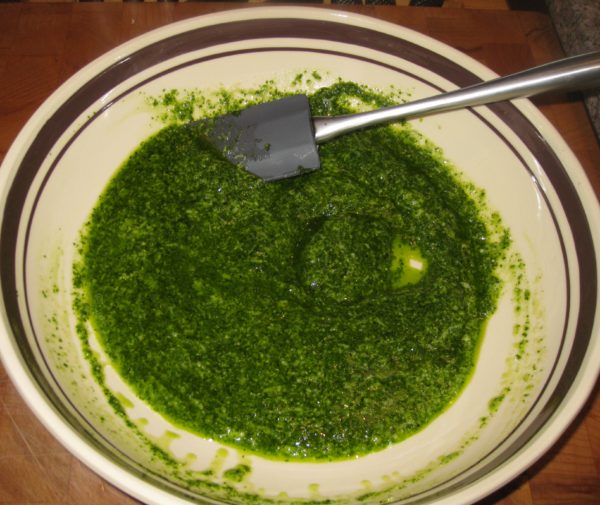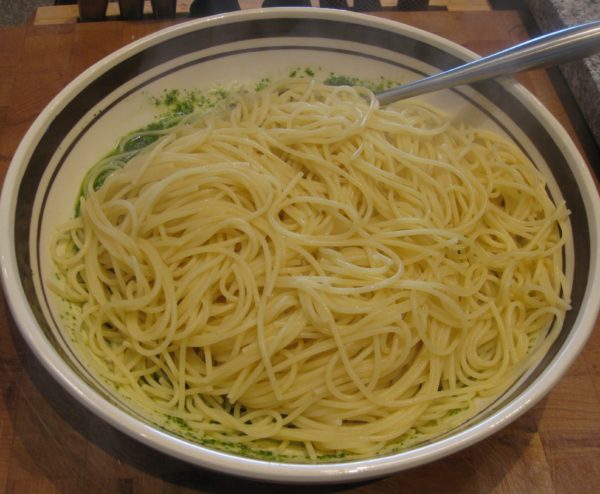September 8, 2017
Pasta with a sauce of uncooked tomatoes, herbs and aromatics is one of the delights of late summer. While this is very easy to make, and only a few tomatoes are needed, the tomatoes must be vine-ripened.
If you have just one tomato plant you’ll probably have enough tomatoes to make a batch of Salsa Cruda. Farmers Market tomatoes are a good option this time of year, too.
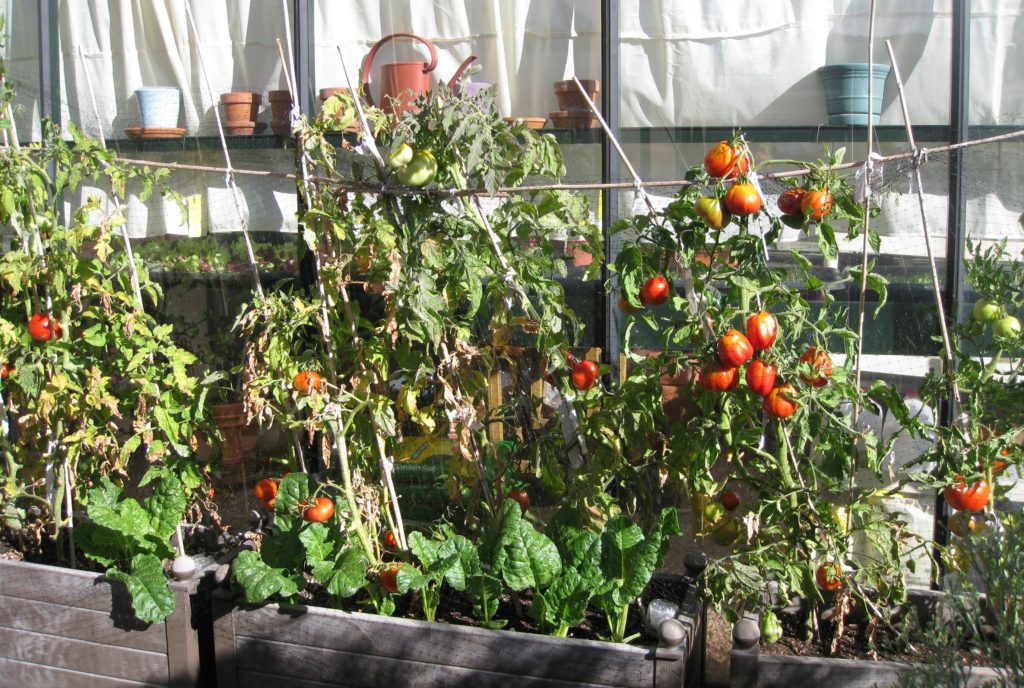
I make this with our home-grown tomatoes which are always red but using some of the amazing heirloom tomatoes in colors of yellow, green, or purple available in farmers markets would make a dramatic sauce.
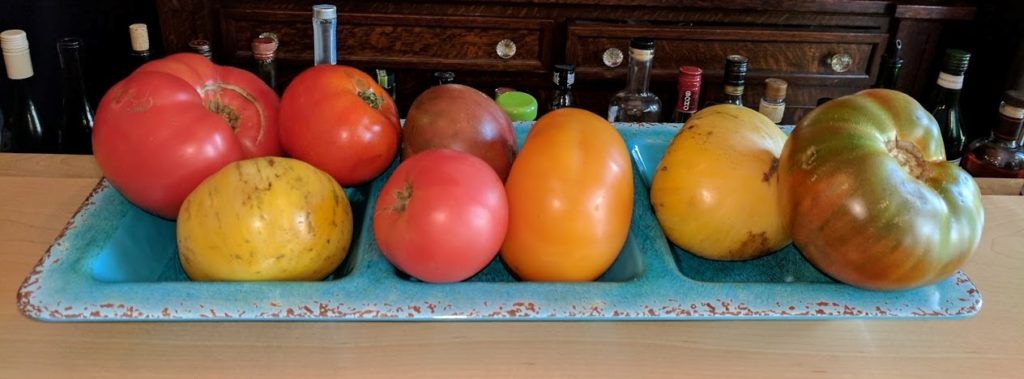
If you can’t get vine-ripe tomatoes, or you want to make a similar sauce at a time other than late summer, you can use two or three roasted red peppers in place of the tomatoes. I’ll be posting a recipe for roasted peppers next month, after tomato season is over. In a pinch, you can buy a jar of good-quality roasted peppers.
Although this recipe is not a traditional “family of origin” recipe it is one that I have been making for almost 30 years. I consider it to be one of my traditions.
While you can still get vine-ripened tomatoes, give this easy and delicious recipe a try.
Follow us
Click HERE to join our mailing list and you’ll never miss a recipe again!
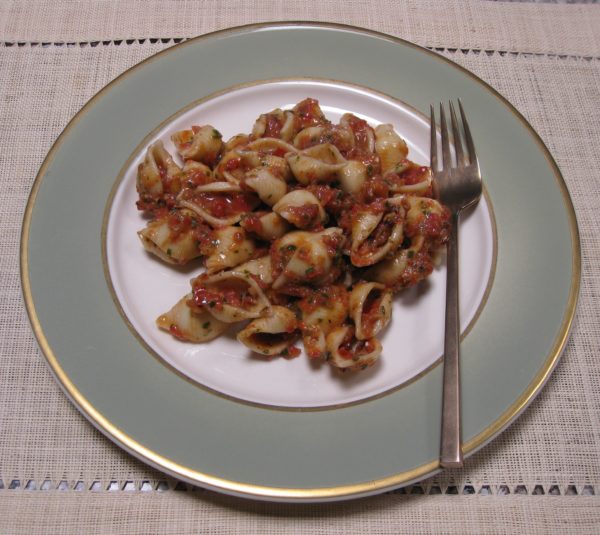
| Prep Time | 15 minutes |
| Cook Time | 15 minutes |
| Passive Time | 1 hour |
| Servings |
people
|
- 1 pound of short pasta such as fusilli or small shells
- 2 pounds of vine-ripe tomatoes coarsely chopped
- 1/3 cup olive oil
- 3 cloves garlic coarsely chopped
- 1-2 fresh hot peppers coarsely chopped, such as Serrano, Jalapeno or Cayenne, optional
- 1/2 cup basil leaves
- 1/4 cup parsley leaves
- 2 tablespoons Parmesan cheese
- 2 tablespoons chopped Kalamata olives optional
- 2 tablespoons blue cheese such as gorgonzola, optional
- 2 teaspoons salt for sauce plus more for cooking pasta
- black pepper freshly ground to taste
Ingredients
|

|
- Coarsely chop the hot pepper.
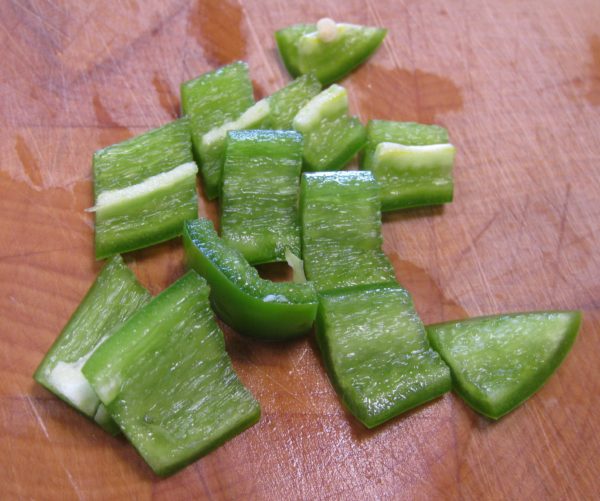
- Coarsely chop the garlic.
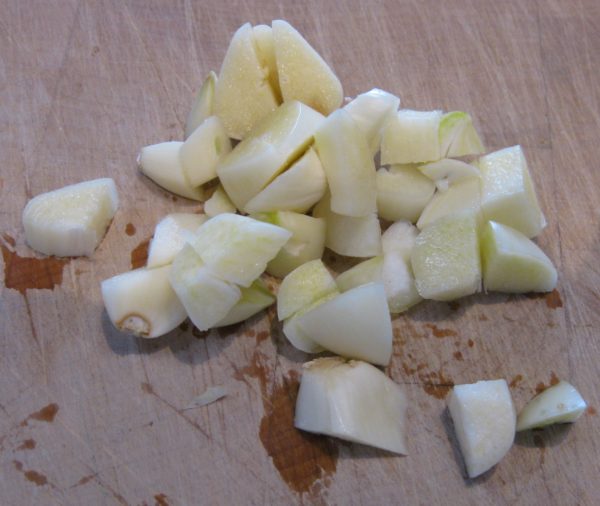
- Combine olive oil, garlic, and hot peppers, if using, in the food processor.
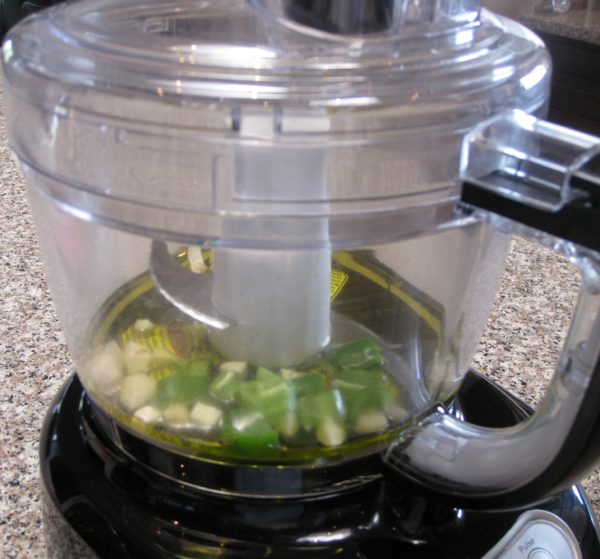
- Process until finely chopped.
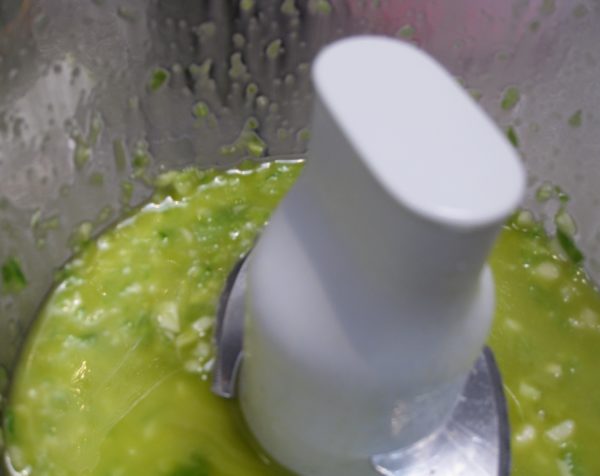
- Add basil, parsley, Parmesan cheese and Kalamata olives, if using.
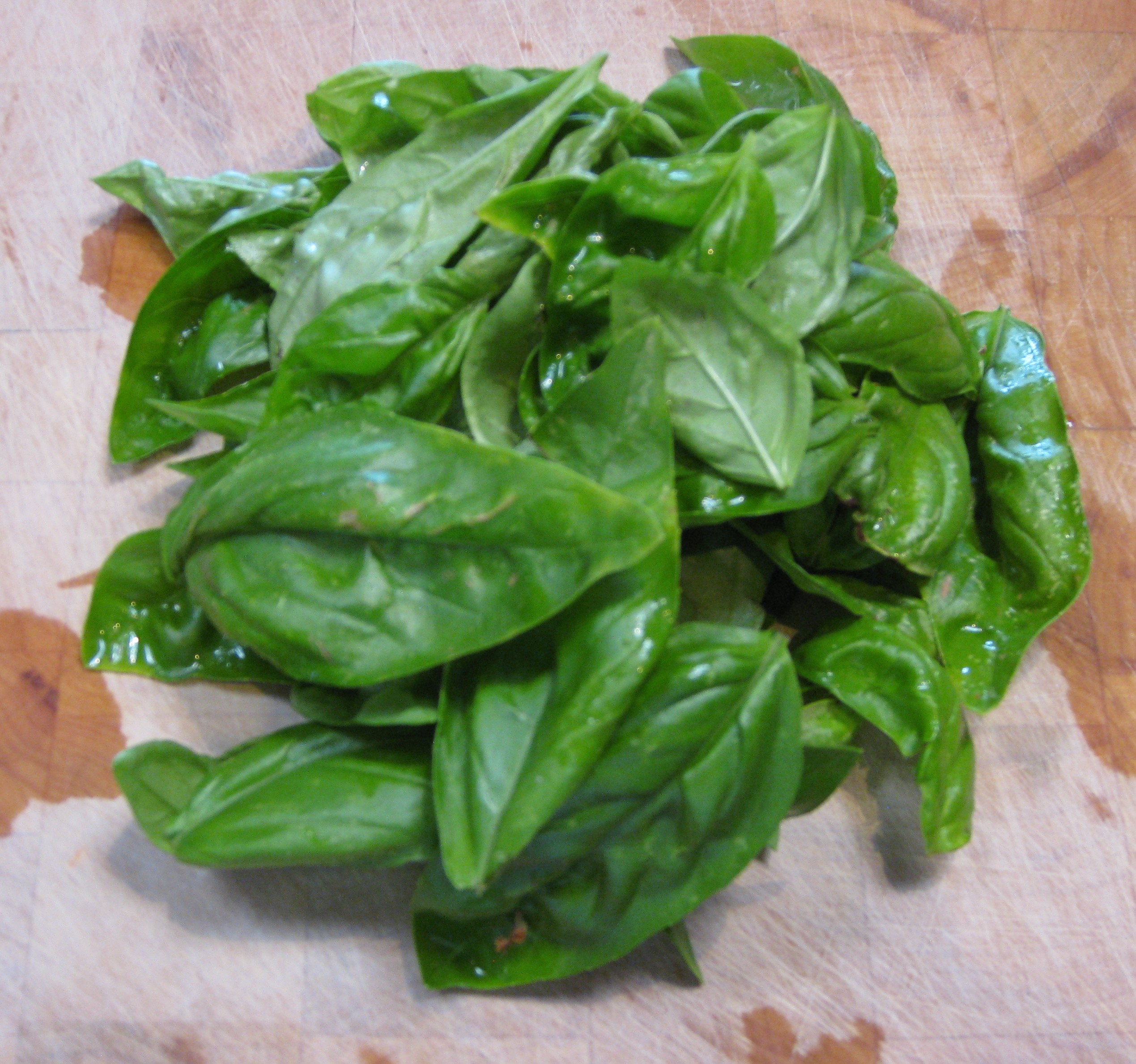
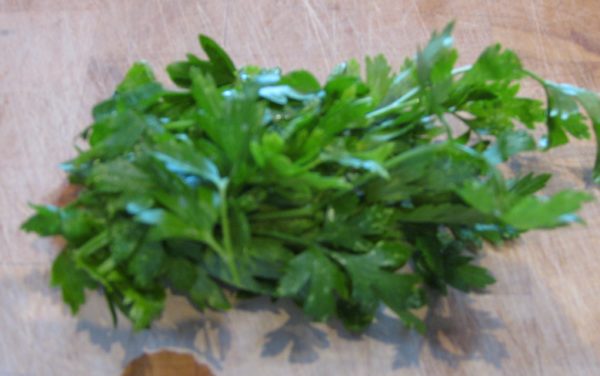
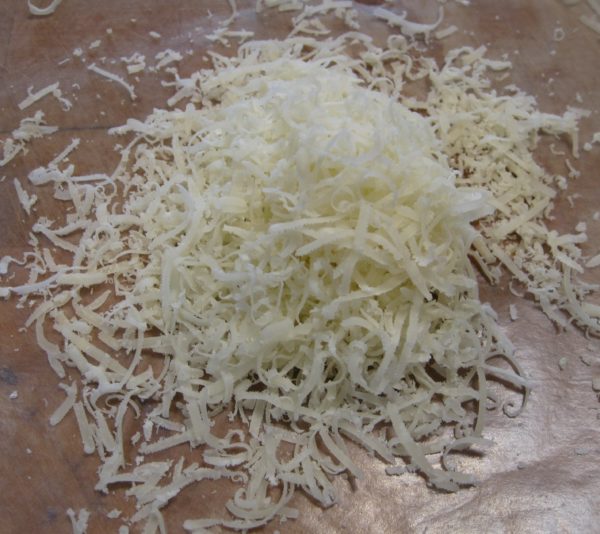
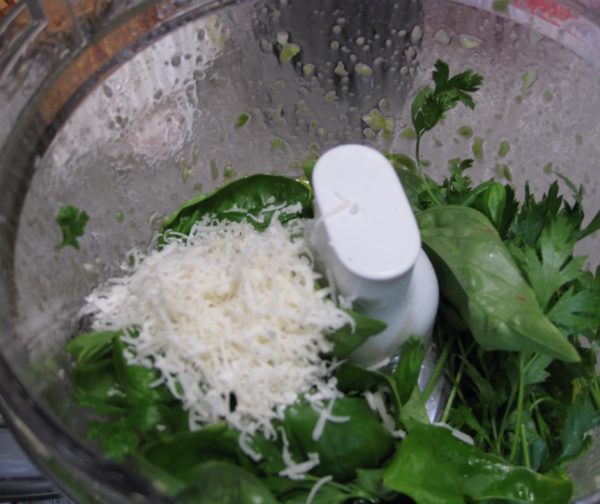
- Pulse a few times to chop.
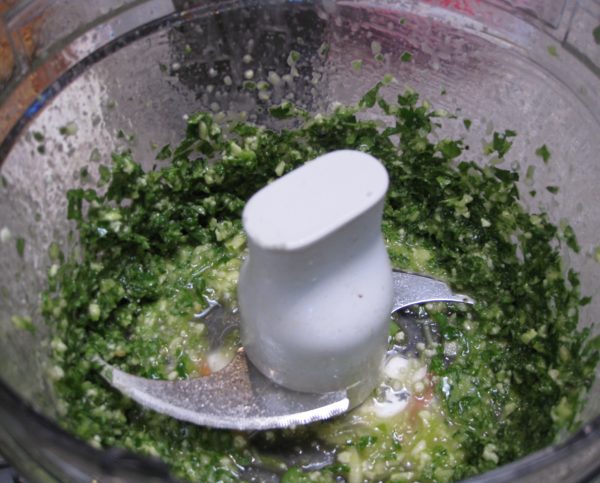
- Add tomatoes, blue cheese, if using, salt, and black pepper and pulse until finely chopped, but not pureed.
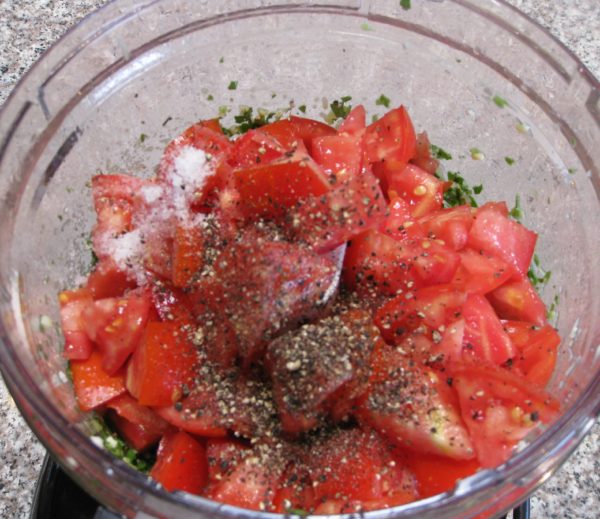
- There should definitely be some texture to the sauce.
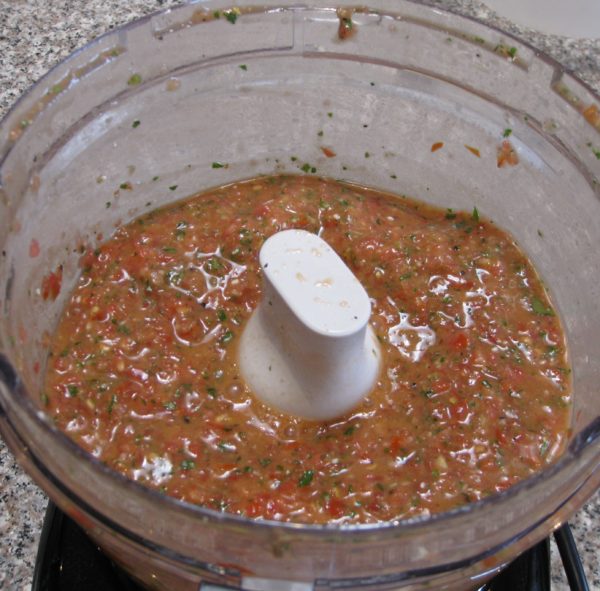
- Bring three quarts of water to a rolling boil.
- Season the water with 1/3 cup of salt.
- Add the pasta and cook until al dente.
- When the pasta is done, reserve about ½ cup of the pasta-cooking liquid to thin the sauce if needed.
- Drain the pasta.
- Drain the hot water from the serving bowl. Add the pasta and sauce to the warmed bowl. Toss well.
- If needed, thin the sauce with some of the reserved pasta water. This will likely not be the case but it is always a good idea to have some pasta-cooking water available just in case.
Copyright © 2017 by VillaSentieri.com. All rights reserved.

